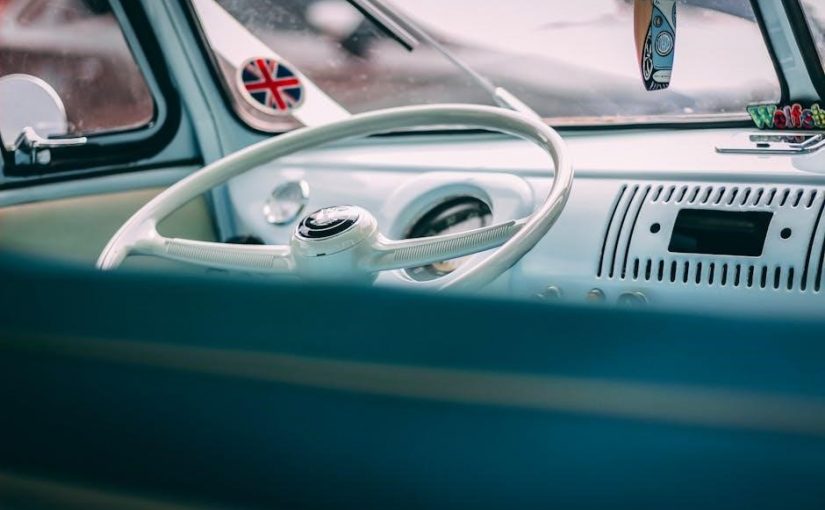Converting your 240SX from automatic to manual transmission unlocks enhanced performance, driver control, and enthusiast satisfaction. This guide provides a detailed, step-by-step approach to achieving a successful swap.
Overview of the Auto to Manual Conversion Process
Converting the 240SX from automatic to manual transmission involves a detailed, multi-step process that requires careful planning and execution. This transformation enhances performance, driver control, and enthusiast satisfaction. The process includes removing the automatic transmission, installing a manual transmission, modifying the wiring harness, adjusting the ECU, and installing a clutch system. It also involves upgrading the drivetrain components, such as the driveshaft and axles, to ensure compatibility and reliability. While the conversion is complex, it can be achieved with the right tools, parts, and guidance. A comprehensive guide or tutorial is essential to navigate the process smoothly, ensuring all modifications are done correctly and safely.
Benefits of Converting from Automatic to Manual Transmission
Converting the 240SX from automatic to manual transmission offers several advantages, including improved performance, increased driver control, and enhanced driving engagement. Manual transmissions typically provide better acceleration and fuel efficiency, especially in city driving conditions. Drivers also benefit from a more direct connection to the vehicle, making the driving experience more enjoyable and immersive. Additionally, manual transmissions often require less maintenance over time compared to automatics, reducing long-term ownership costs. For enthusiasts, the conversion aligns with the car’s sporty nature and the desire for a more hands-on driving experience. Overall, the switch to manual transmission can elevate both the performance and satisfaction of owning a 240SX.
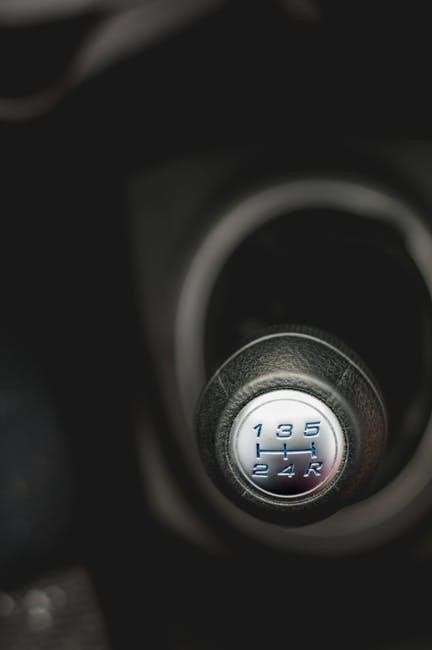
Understanding the Conversion
Understanding the conversion involves grasping the mechanical and wiring changes needed to swap from automatic to manual, enhancing performance, control, and driver engagement in the 240SX.
Differences Between Automatic and Manual Transmissions in the 240SX
The 240SX’s automatic transmission relies on a torque converter and hydraulic controls for seamless shifting, while the manual transmission uses a clutch and gearstick for driver input. Automatics prioritize convenience, with the transmission handling gear shifts automatically, whereas manuals offer better control and engagement, requiring the driver to manually shift gears. In the 240SX, the manual transmission typically includes a lighter flywheel and a more direct connection to the engine, improving responsiveness. Automatics, however, are heavier and less efficient due to the torque converter. For enthusiasts, the manual transmission enhances driving dynamics and performance, making it a popular choice for sporty applications.
Key Components Involved in the Conversion
The primary components needed for a 240SX auto-to-manual conversion include a complete manual transmission assembly, a clutch kit, and a flywheel. The transmission must be compatible with the S13 or S14 chassis, such as the Nissan SR20DET or KA24DE manual gearbox. A clutch master cylinder and slave cylinder are essential for engaging and disengaging the clutch. The shifter assembly, including the gearshift and linkage, must be installed to replace the automatic shifter. Additionally, a lightweight flywheel is often recommended for better throttle response. Hydraulic lines and fittings are required to connect the clutch system. Mounting hardware, such as transmission mounts and crossmember brackets, ensures proper installation. These components are critical for a seamless conversion, enabling precise control over the vehicle’s performance.
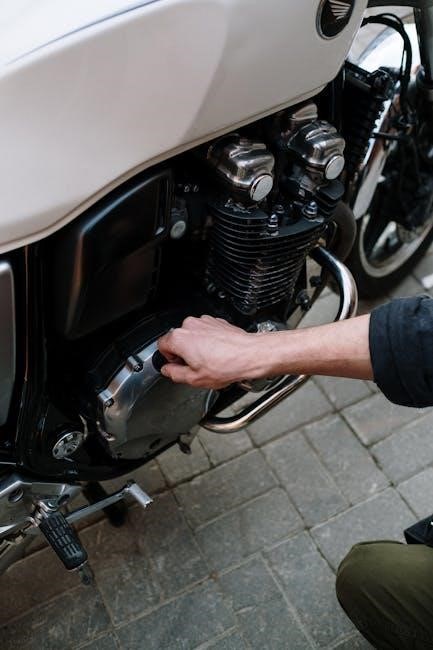
Gathering Necessary Parts and Tools
Collect a manual transmission, clutch kit, flywheel, and hydraulic lines. Essential tools include a transmission jack, socket set, wrenches, and a clutch alignment tool for precise installation.
Essential Parts Required for the Conversion
The core components needed for a 240SX auto-to-manual conversion include a compatible manual transmission (e.g., Nissan SR20DET or KA24DE), a clutch kit, and a lightweight or stock replacement flywheel. Additionally, the hydraulic clutch system, including the master cylinder and slave cylinder, must be installed. A manual shifter assembly, driveshaft, and axles specifically designed for manual transmission are also required. Transmission mounts, a pilot bearing, and a clutch alignment tool are essential for proper installation. Ensure all parts are compatible with your 240SX model year and engine type to avoid compatibility issues during the swap.
Specialized Tools and Equipment Needed
Performing a 240SX auto-to-manual conversion requires specific tools to ensure a smooth process. A transmission jack is essential for safely removing and installing the transmission. A clutch alignment tool is necessary for proper clutch installation. Hydraulic line tools are needed for bleeding the clutch system. A dial indicator is required for setting the clutch release point accurately. Axle and ball joint tools are helpful for suspension adjustments. A wiring harness diagram is crucial for modifying the electrical system. Additionally, a set of metric sockets and wrenches, torque wrench, and punches are indispensable. A service manual specific to your 240SX model is highly recommended for guidance. These tools ensure precision and efficiency during the conversion process.
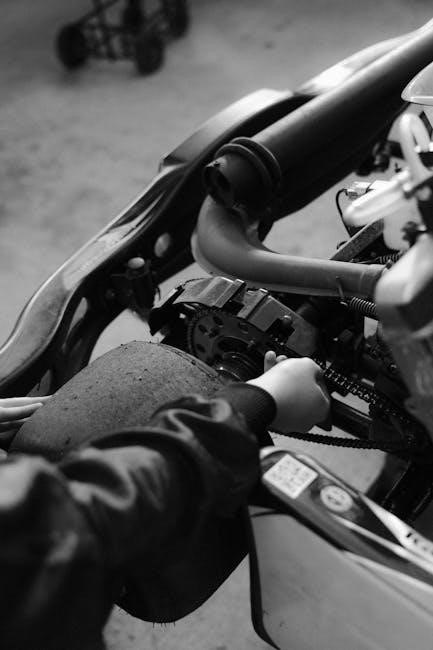
Cost Estimation
A 240SX auto-to-manual conversion typically costs between $1,500 and $3,000, depending on parts quality and labor. This includes transmission, clutch, and drivetrain components, plus installation fees.
Breakdown of Parts and Labor Costs
The cost of an auto-to-manual conversion for a 240SX varies based on parts quality and labor. Manual transmission assemblies range from $800 to $1,500, while clutch kits cost $300 to $600. A lightweight flywheel can add $200 to $400, and the driveshaft may need replacement, costing $200 to $300. Axles and adapter plates can add another $200 to $500. Labor costs for professional installation typically range from $800 to $1,500, depending on the shop’s rates. DIY enthusiasts can save on labor but may still need specialized tools. Additional costs may include modifications like engine mounts or wiring harnesses. Overall, the total cost can range from $2,000 to $4,000, depending on the chosen components and installation method.
DIY vs. Professional Installation: Cost Comparison
A DIY auto-to-manual conversion for a 240SX can save significant costs but requires time and mechanical expertise. Parts alone, including transmission, clutch, and adapters, can range from $1,500 to $3,000. Labor costs for professional installation typically add $800 to $1,500, depending on the shop. DIY enthusiasts save on labor but may incur tooling costs, such as a transmission jack or specialized wrenches, adding $200 to $500. Professional installation offers warranty coverage and ensures reliability, especially for inexperienced builders. Overall, DIY can cost $1,500 to $3,500, while professional services range from $2,300 to $4,500. The choice depends on skill level, time availability, and budget constraints.
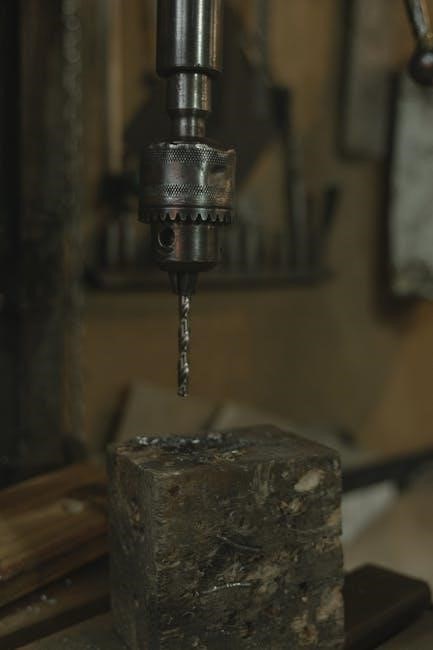
Step-by-Step Installation Process
Begin by removing the automatic transmission, then install the manual gearbox, clutch system, and driveshaft. Ensure proper alignment and secure all components tightly for optimal performance.
Removing the Automatic Transmission
Begin by draining the transmission fluid and disconnecting the battery to prevent electrical issues. Next, remove the shifter and center console to access the transmission. Disconnect the electrical connectors, hydraulic lines, and coolant lines attached to the automatic transmission. Support the transmission with a jack and remove the mounting bolts. Carefully lower the transmission and slide it out of the chassis. Be cautious of the torque converter, which may remain attached to the engine. Once the transmission is removed, inspect the area for any remaining components or debris. Label all disconnected parts for easy reinstallation later. This step is crucial for a smooth manual transmission installation.
Installing the Manual Transmission
Position the manual transmission into the chassis, ensuring proper alignment with the engine and mounts. Secure it using the provided bolts, tightening them evenly. Install the clutch and flywheel, aligning them carefully to avoid damage. Attach the shifter mechanism, ensuring it connects smoothly to the transmission. Reconnect the hydraulic clutch line, electrical connectors, and any other necessary components. Double-check the alignment of the driveshaft and axles. Tighten all bolts to the specified torque to ensure stability. Test the clutch pedal for proper engagement and adjust as needed. Use a clutch alignment tool to ensure the clutch disc is centered. Refer to the service manual for precise installation steps to guarantee safety and correctness.
Wiring and Electrical Adjustments
Modify the wiring harness to accommodate the manual transmission, including the clutch switch and reverse light circuit; Update the ECU to recognize the manual setup.
Understanding the Wiring Harness Modifications
When converting the 240SX from automatic to manual, the wiring harness must be modified to accommodate the manual transmission components. The primary focus is on integrating the clutch switch, which ensures the vehicle cannot start while in gear. Additionally, the reverse light circuit must be wired to the manual transmission, as automatics typically have a built-in reverse light switch. You may also need to add or modify wiring for the neutral switch and clutch position sensor. It’s crucial to consult a wiring diagram specific to your 240SX model year (S13 or S14) to ensure all connections are correct. Proper wiring ensures smooth operation and prevents electrical issues down the road.
ECU Adjustments for Manual Transmission Compatibility
When converting the 240SX from automatic to manual, ECU adjustments are necessary to ensure compatibility with the manual transmission. The ECU must be reprogrammed to recognize the manual setup, as it relies on sensors specific to the automatic transmission, such as torque converter lockup and gear ratio information. Failure to adjust the ECU can lead to issues like incorrect gear ratio readings, affecting the speedometer and transmission control. Features like cruise control and traction control may also malfunction. Reprogramming involves disabling automatic-specific functions and adjusting settings like the RPM limiter. Consulting a wiring diagram for your 240SX model (S13 or S14) is crucial for accurate modifications. Proper ECU tuning ensures smooth operation and prevents performance issues. Some enthusiasts use tuning software or standalone ECUs designed for manual transmissions to simplify the process. Improper adjustments can result in decreased performance, poor fuel efficiency, or potential damage to the transmission and engine. Seeking professional help is recommended for those inexperienced with ECU tuning to avoid long-term complications. Proper ECU adjustments are vital for maintaining optimal vehicle performance and longevity.

Clutch System Installation
The clutch system installation involves mounting the clutch disc, pressure plate, and bearing. Proper alignment is critical to ensure smooth operation and prevent premature wear. Incorrect installation can lead to uneven engagement or damage to transmission components, requiring costly repairs. Always use a pilot bearing compatible with the manual transmission to avoid clutch pedal issues. Tightening the pressure plate evenly ensures consistent friction surface contact. If misaligned, the clutch may slip or chatter, reducing overall performance. Professional assistance is recommended for precise installation and long-term reliability.
Choosing the Right Clutch Kit
Selecting the appropriate clutch kit is crucial for optimal performance during the conversion. Kits vary based on materials, such as organic, ceramic, or Kevlar, each offering different friction properties. Consider your driving habits and horsepower level to avoid premature wear or insufficient engagement. Stock-style kits are ideal for daily driving, while performance or racing kits suit high-power builds. Ensure the kit includes a pressure plate, disc, and bearing. Compatibility with the 240SX’s manual transmission is essential. Consult experts or forums for recommendations tailored to your specific setup. Research manufacturers known for quality and reliability. Avoid generic kits, as they may lack proper alignment or durability. Proper selection ensures smooth engagement and longevity of the clutch system. Always verify specifications before purchasing.
Installing the Clutch and Related Components
Installing the clutch involves removing the old clutch and flywheel, then inspecting and preparing the surface for the new components. Align the clutch disc with the pilot bearing and press it into place. The pressure plate is then bolted on, ensuring proper alignment. Tighten the bolts evenly in a star pattern to avoid warping. Install the throw-out bearing and slave cylinder, ensuring they are securely fastened. Bleed the hydraulic system to remove air bubbles. Reinstall the transmission, making sure it aligns correctly with the engine. Test the clutch pedal to ensure proper engagement and disengagement. If any issues arise, double-check the alignment and connections. Proper installation ensures smooth operation and prevents premature wear.
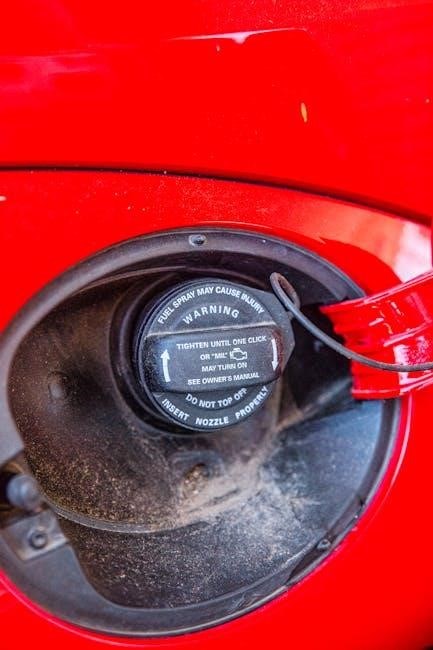
Drivetrain Modifications
Drivetrain modifications are essential for a smooth auto-to-manual conversion in the 240SX. Upgrading the driveshaft, axles, and differential ensures compatibility with the manual transmission. Sturdy mounts are also recommended for added stability and performance.
Upgrading the Driveshaft and Axles
When converting the 240SX from automatic to manual, upgrading the driveshaft and axles is crucial for optimal performance. The automatic transmission uses a shorter driveshaft compared to the manual setup, so a replacement or modification is necessary. Lightweight driveshafts made of aluminum or carbon fiber can improve power delivery and reduce rotational mass. Additionally, the axles must be inspected and potentially upgraded to handle the increased torque and stress from manual shifting. High-strength axles, such as those sourced from performance-oriented models or aftermarket suppliers, are recommended. Proper alignment and balancing of the driveshaft are also essential to avoid vibrations and ensure smooth operation. Upgrading these components ensures reliability and enhances the overall driving experience.
Adjusting the Fuel System for Manual Transmission
When converting the 240SX from automatic to manual, adjusting the fuel system is essential for optimal performance. The automatic transmission’s torque converter and throttle response differ significantly from the manual setup, requiring recalibration of the engine’s fueling strategy. The throttle position sensor may need adjustment to align with the manual transmission’s pedal input. Fuel pressure should be checked and potentially increased to accommodate the varying engine loads during shifting. Additionally, the fuel injectors should be inspected and cleaned to ensure proper fuel flow. ECU tuning is critical to refine fuel injection timing and enrichment maps for the manual transmission. It’s advisable to consult a professional tuner to avoid engine damage and ensure smooth operation.

Troubleshooting Common Issues
Common issues during the 240SX auto-to-manual conversion include faulty clutch engagement, leaking hydraulic systems, and misaligned gear shifts. These problems often stem from improper installation or worn components.
Common Problems During the Conversion Process
During the 240SX auto-to-manual conversion, common issues arise, such as improper transmission alignment, faulty pilot bearing installation, and incorrect clutch alignment. These problems can lead to difficulty shifting gears or clutch failure. Additionally, leaking hydraulic systems and misadjusted clutch pedals are frequent challenges. Many enthusiasts also encounter electrical issues, such as incorrect wiring harness connections, which can prevent proper transmission engagement. Another common problem is drivetrain misalignment, causing vibrations or noise. Addressing these issues early is crucial to ensure a smooth conversion. Proper tools, accurate measurements, and adherence to installation guides can help mitigate these problems. Regular inspection of components and testing during the process can also prevent costly repairs down the line.
Diagnosing and Fixing Clutch and Gearbox Issues
Diagnosing clutch and gearbox issues during a 240SX auto-to-manual conversion requires careful inspection. Common clutch problems include slipping or failure to engage, often due to a worn clutch disc or incorrect hydraulic system pressure. Gearbox issues may manifest as grinding gears or difficulty shifting, typically caused by misaligned or worn synchronizers. To fix these, inspect the clutch disc for wear and replace it if necessary. For gearbox problems, check the engagement of gears and ensure proper adjustment of the shifter assembly. If grinding persists, worn synchronizers or bearings may need replacement. Always test the clutch and gearbox thoroughly after repairs to ensure smooth operation. Proper alignment and adjustment are critical to avoid further damage and ensure reliable performance.
Testing the Conversion
After completing the manual conversion, perform initial checks on the engine and transmission operation. Test the clutch engagement and gear shifts for smoothness and consistency. Ensure proper electrical connectivity and monitor for leaks. Conduct a test drive to assess performance and identify any issues requiring adjustment.
Initial Testing and Adjustment Phase
The initial testing phase ensures the manual transmission system functions correctly after conversion. Start with a stationary check: verify clutch engagement, gear shifts, and electrical connections. Test the clutch pedal feel and ensure smooth transitions between gears. Monitor for any leaks or unusual noises. Perform a slow test drive in a controlled environment to assess low-speed operation and clutch behavior. Pay attention to the engine’s response and transmission synchronization. Adjust the clutch cable or hydraulic system if necessary to achieve optimal engagement. Check the ECU for proper communication with the manual transmission setup. Address any issues immediately to prevent damage. This phase is critical for identifying and resolving potential problems before full operation.
Road Testing and Fine-Tuning
Road testing is essential to evaluate the manual transmission’s performance in real-world conditions. Start with a controlled drive to assess acceleration, shifting smoothness, and clutch engagement. Pay attention to gear synchronization, especially during high-RPM shifts. Test deceleration and downshifting to ensure proper engine braking. Check for any unusual noises, vibrations, or hesitation. Fine-tuning involves adjusting the clutch cable, pedal feel, and shifter alignment for optimal performance. Test uphill climbs or city driving to validate low-speed maneuverability. Ensure the ECU adapts to the manual setup without error codes. Fine-tuning ensures reliability and drivability, making the conversion enjoyable and functional. Address any issues promptly to avoid long-term damage or wear.

Maintenance and Upkeep
Regular maintenance ensures longevity of the manual transmission. Check clutch wear, transmission fluid levels, and inspect drivetrain components for wear. Replace parts as needed for optimal performance.
Regular Maintenance for the Manual Transmission
Regular maintenance is crucial to ensure the longevity and performance of the manual transmission in your 240SX. Start by checking the transmission fluid level regularly and replacing it every 30,000 to 60,000 miles, depending on usage. Inspect the clutch pedal for proper alignment and adjust as needed to prevent uneven wear. Lubricate the shift linkage and bearings periodically to maintain smooth gear transitions. Additionally, monitor the driveshaft and axles for any signs of wear or damage. Replace the clutch when it shows significant wear, typically when it drops below 1/8 inch thickness. Finally, check the transmission mounts and crossmember for stability and tighten any loose bolts to prevent vibrations. Regular inspections and timely replacements will keep your manual transmission running smoothly for years.
Clutch Replacement and Longevity Tips
Clutch replacement is a critical aspect of maintaining your 240SX’s manual transmission. Replace the clutch when it shows excessive wear, such as slippage or difficulty engaging gears. Use a high-quality clutch kit designed for your vehicle to ensure optimal performance and durability. Always replace the flywheel and pressure plate at the same time for proper alignment and functionality. To extend clutch longevity, avoid riding the clutch or using it unnecessarily, as this can cause premature wear. Drive smoothly, especially in stop-and-go traffic, and avoid aggressive acceleration. Regular inspections of the clutch system can help identify issues before they escalate. Proper maintenance and driving habits will significantly prolong the life of your clutch.
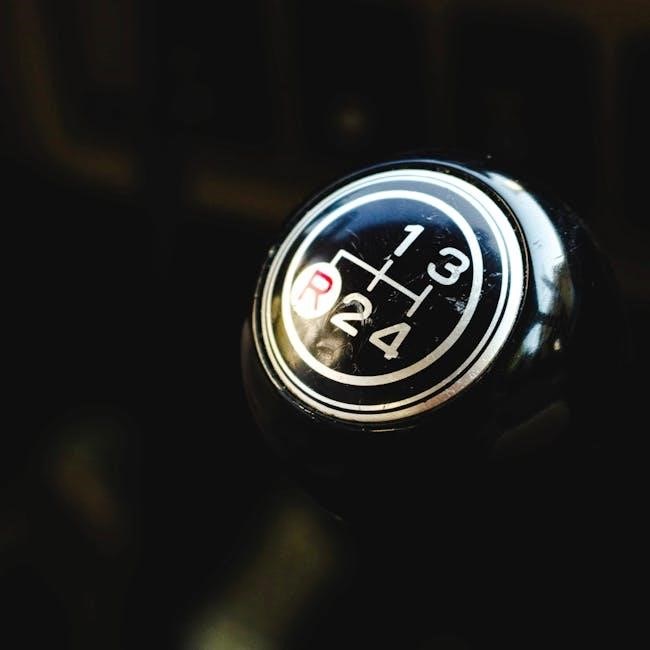
Community and Resources
The 240SX community offers extensive support through online forums, social media groups, and YouTube tutorials. Enthusiasts share detailed guides, troubleshooting tips, and personal experiences, fostering collaboration and knowledge exchange.
Online Forums and Communities for Support
Online forums like Nissan 240SX Forums and S-Chassis forums are invaluable resources for auto-to-manual conversion guidance. These communities provide detailed tutorials, troubleshooting advice, and firsthand experiences from enthusiasts who have completed the swap. Facebook groups and Reddit communities dedicated to the 240SX also offer real-time support and access to experts. Members often share step-by-step guides, wiring diagrams, and tips for overcoming common challenges. Additionally, specialized forums focused on drift or track modifications can offer insights into optimizing the conversion for performance. These platforms foster collaboration, allowing enthusiasts to learn from others’ successes and avoid common pitfalls. They are essential for staying informed and motivated throughout the process.
Recommended Guides and Tutorials
For a successful auto-to-manual conversion in a 240SX, relying on trusted guides and tutorials is crucial. Platforms like YouTube and Reddit host detailed video walkthroughs and step-by-step instructions from experienced enthusiasts. Websites such as 240SX Garage and Kaizen Tuning provide comprehensive manuals tailored to the S13 and S14 chassis. Additionally, forums like Nissan 240SX Forums feature community-vetted guides, covering everything from wiring adjustments to clutch installations. These resources often include diagrams, part lists, and troubleshooting tips, ensuring a smoother process. Many enthusiasts recommend starting with the “240SX Manual Swap Guide” by Driftworks, which offers a detailed, beginner-friendly approach. These guides are essential for avoiding costly mistakes and ensuring compatibility with your specific vehicle configuration.
Final Thoughts on the Conversion Process
Converting a 240SX from automatic to manual transmission is a rewarding yet challenging project that offers immense satisfaction for enthusiasts. The process not only enhances driving engagement but also unlocks the car’s full performance potential. While it requires significant time, effort, and technical skill, the end result is well worth the investment. Drivers gain better control, improved fuel efficiency, and a more connected driving experience. For those passionate about DIY automotive work, this conversion is a testament to their dedication and mechanical prowess. Whether for daily driving or track performance, the manual transmission upgrade elevates the 240SX to a whole new level of driving enjoyment.
Encouragement and Next Steps for Enthusiasts
Embarking on an auto-to-manual conversion in a 240SX is a bold step that showcases passion and dedication. For enthusiasts who have successfully completed the process, the sense of accomplishment is unparalleled. This project often sparks a deeper connection with the vehicle and fosters a greater appreciation for automotive mechanics. Moving forward, drivers can explore performance upgrades, such as aftermarket coilovers or engine modifications, to further enhance their car’s capabilities. Joining local car meets or online forums can provide valuable networking opportunities and inspiration. Whether aiming for track days or casual cruising, the manual transmission upgrade serves as a solid foundation for future adventures. Keep experimenting, learning, and pushing the limits of your 240SX!
